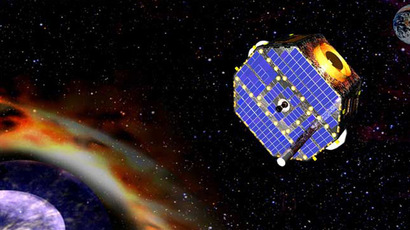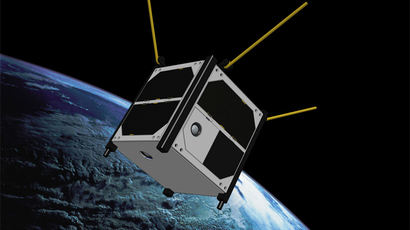UK’s $90 million Skylon to ‘transform how we access space’

Skylon, a revolutionary UK spacecraft which could take adventurers to Earth’s stratosphere in just 15 minutes or fly travelers to Australia in four hours, will get $90 million from the government. The challenge is to cut the cost of space travel.
Skylon boasts a hybrid jet-rocket engine, SABRE (Synergistic
Air-Breathing Rocket Engine), capable of blasting into low earth
orbit. It takes off from a standard runway before accelerating to
speeds of 19,000 miles per hour.
The Minister for Universities and Science says “SABRE has the
potential to completely transform how we access space.”
“By supporting this breakthrough technology we are giving the
UK a leading position in a growing market of new generation
launchers and removing one of the main barriers to the growth of
commercial activity in space,” David Willetts told the
Telegraph.

The minister is expected to share more details about the project
at the UK Space Conference in Glasgow, which runs until
Wednesday.
The founder of Reaction Engines, Alan Bond, has received the
go-ahead from the chancellor George Osborne to construct the
3,500mph rocket.
Unlike conventional aircraft engines, SABRE switches in flight to
become a rocket engine that can boost Skylon to a speed faster
than Mach 5, or more than five times the speed of sound,
according to icarusinterstellar.org. After take-off, SABRE mixes
hydrogen with air it sucks in, after which it switches to rocket
mode, using oxygen carried in its own tanks to accelerate into
space.

The breakthrough in the engine’s technology is that SABRE
engineers can cool the incoming airstream from a temperature of
over 1,000 C to -150 C in less than a hundredth of a second
without the engine frosting up.
Skylon’s 82-metre long fuselage will be built from carbon-fiber
reinforced plastic with a black ceramic skin to protect against
the heat of re-entry. It will be powered by two SABRE engines.
Osborne's decision to invest in the Sabre engine was boosted by a
hundred successful test runs and a study by the European Space
Agency to validate the design.

It is hoped that Skylon could cut the launch expenditures by over
95%, bringing the cost of space travel in line with aviation.
As things stand now, its only competitor these days is Richard
Branson’s Virgin Galactic, which offers
six-minutes-of-weightlessness-trips for $182,000. The challenge
for Skylon is to reduce this price.
"It would allow us to launch satellites far more cheaply, to
build space stations or to create orbiting solar arrays that
would beam power to earth. We could even construct spaceships for
missions to other planets," the British inventor told
International Business Times.














